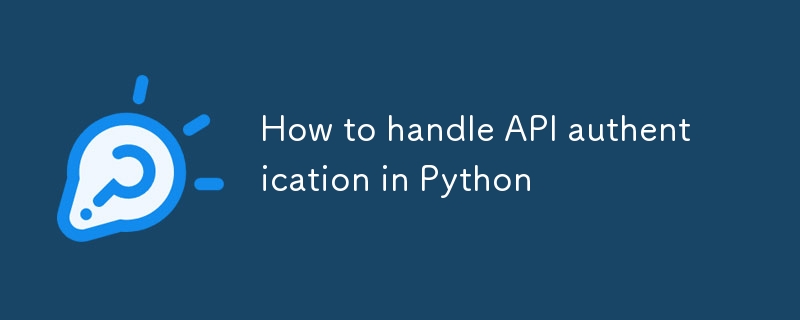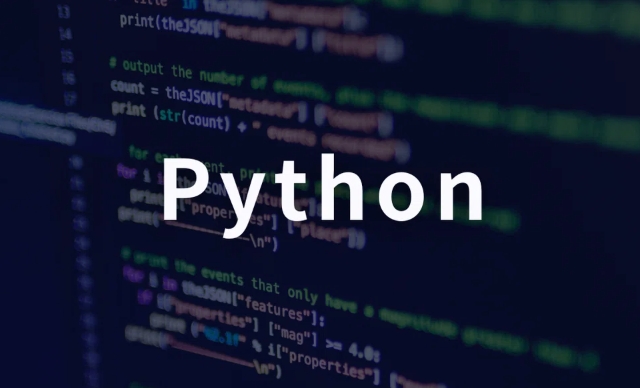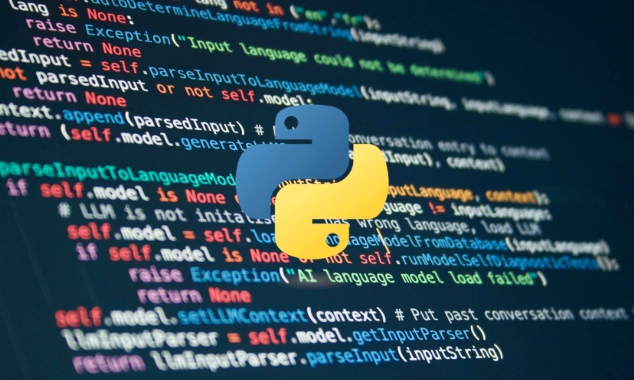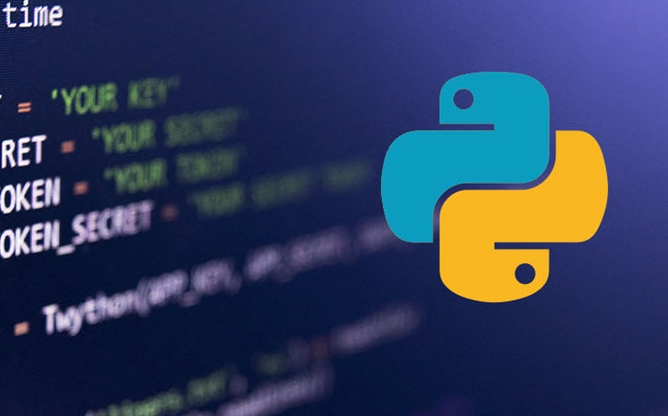How to handle API authentication in Python
Jul 13, 2025 am 02:22 AMThe key to handling API authentication is to understand and use the authentication method correctly. 1. API Key is the simplest authentication method, usually placed in the request header or URL parameters; 2. Basic Auth uses username and password for Base64 encoding transmission, suitable for internal systems; 3. OAuth2 needs to obtain the token first through client_id and client_secret, and then bring a Bearer Token in the request header; 4. In order to deal with the token expiration, the token management class can be encapsulated and automatically refreshed the token; in short, selecting the appropriate method according to the document and safely storing the key information is the key.

Handling API authentication is not actually mysterious. The key is to understand the authentication method you use and how to use it correctly in Python. The authentication mechanisms used by different APIs may be different, but the most common methods are: API Key, Basic Auth, OAuth1, and OAuth2. Let’s take a look at how these common methods are handled in Python.

Use API Key to authenticate
Many services verify the request source through a simple API Key, which is usually sent as part of the request headers.
The method is very simple:

- Add
Authorizationfield to the request header, the value isAPI_KEY - Or append
key=your_api_keyto the URL parameter
import requests
headers = {
'Authorization': 'your_api_key_here'
}
response = requests.get('https://api.example.com/data', headers=headers)Some APIs require you to use specific field names in the header, such as
X-API-Key. At this time, you cannot forceAuthorization, you have to see the documentation instructions.
Using Basic Auth
Basic Auth is a relatively basic HTTP authentication method. Usually, the user name and password are combined into a string and then Base64 encoding is passed to the server.

Python's requests library provides built-in support:
import requests
response = requests.get(
'https://api.example.com/data',
auth=('username', 'password')
)This method is suitable for testing or internal system use and is not recommended for public services because credentials are easily intercepted.
Use OAuth2 to get the token and call the API
Now many services use the OAuth2 process to obtain the access token (Token), and then use this token to initiate subsequent requests.
The general process is as follows:
- Apply for token from the authentication server (client_id and client_secret are required)
- Received the returned access_token
- Take
Authorization: Bearer your_token
import requests
# Get Token
data = {
'grant_type': 'client_credentials'
}
auth = ('client_id', 'client_secret')
response = requests.post('https://api.example.com/oauth/token', data=data, auth=auth)
token = response.json()['access_token']
# Use Token to request data headers = {'Authorization': f'Bearer {token}'}
data_response = requests.get('https://api.example.com/data', headers=headers)The implementation details of OAuth2 on different platforms may vary slightly, such as some need to add scope, and some need to specify content-type. Remember to refer to the official documentation.
Handle Token Expiration and Automatic Refresh
Tokens generally have validity periods, and they need to be re-acquisitioned after they expire. If you are writing long-term service (such as background tasks), it is recommended to encapsulate a Token management class.
You can design the logic like this:
- Get the token before the first request
- Save the token and expiration time
- Determine whether the token expires before each request
- If it expires, re-acquire
import time
class TokenManager:
def __init__(self, client_id, client_secret):
self.client_id = client_id
self.client_secret = client_secret
self.token = None
self.expires_at = 0
def get_token(self):
if time.time() >= self.expires_at:
# Simulate requests for new tokens
self.token = 'new_token'
self.expires_at = time.time() 3600 # Assume that one hour expires return self.token After encapsulation, get_token() method can be called uniformly when actually calling the API to avoid frequent manual refresh.
Basically that's it. Although there are a lot of authentication methods, each has a fixed routine. The key is to choose the right method based on the document and pay attention to safely storing the key information.
The above is the detailed content of How to handle API authentication in Python. For more information, please follow other related articles on the PHP Chinese website!

Hot AI Tools

Undress AI Tool
Undress images for free

Undresser.AI Undress
AI-powered app for creating realistic nude photos

AI Clothes Remover
Online AI tool for removing clothes from photos.

Clothoff.io
AI clothes remover

Video Face Swap
Swap faces in any video effortlessly with our completely free AI face swap tool!

Hot Article

Hot Tools

Notepad++7.3.1
Easy-to-use and free code editor

SublimeText3 Chinese version
Chinese version, very easy to use

Zend Studio 13.0.1
Powerful PHP integrated development environment

Dreamweaver CS6
Visual web development tools

SublimeText3 Mac version
God-level code editing software (SublimeText3)

Hot Topics
 How to use PHP combined with AI to achieve text error correction PHP syntax detection and optimization
Jul 25, 2025 pm 08:57 PM
How to use PHP combined with AI to achieve text error correction PHP syntax detection and optimization
Jul 25, 2025 pm 08:57 PM
To realize text error correction and syntax optimization with AI, you need to follow the following steps: 1. Select a suitable AI model or API, such as Baidu, Tencent API or open source NLP library; 2. Call the API through PHP's curl or Guzzle and process the return results; 3. Display error correction information in the application and allow users to choose whether to adopt it; 4. Use php-l and PHP_CodeSniffer for syntax detection and code optimization; 5. Continuously collect feedback and update the model or rules to improve the effect. When choosing AIAPI, focus on evaluating accuracy, response speed, price and support for PHP. Code optimization should follow PSR specifications, use cache reasonably, avoid circular queries, review code regularly, and use X
 PHP calls AI intelligent voice assistant PHP voice interaction system construction
Jul 25, 2025 pm 08:45 PM
PHP calls AI intelligent voice assistant PHP voice interaction system construction
Jul 25, 2025 pm 08:45 PM
User voice input is captured and sent to the PHP backend through the MediaRecorder API of the front-end JavaScript; 2. PHP saves the audio as a temporary file and calls STTAPI (such as Google or Baidu voice recognition) to convert it into text; 3. PHP sends the text to an AI service (such as OpenAIGPT) to obtain intelligent reply; 4. PHP then calls TTSAPI (such as Baidu or Google voice synthesis) to convert the reply to a voice file; 5. PHP streams the voice file back to the front-end to play, completing interaction. The entire process is dominated by PHP to ensure seamless connection between all links.
 Completed python blockbuster online viewing entrance python free finished website collection
Jul 23, 2025 pm 12:36 PM
Completed python blockbuster online viewing entrance python free finished website collection
Jul 23, 2025 pm 12:36 PM
This article has selected several top Python "finished" project websites and high-level "blockbuster" learning resource portals for you. Whether you are looking for development inspiration, observing and learning master-level source code, or systematically improving your practical capabilities, these platforms are not to be missed and can help you grow into a Python master quickly.
 How to use PHP to develop product recommendation module PHP recommendation algorithm and user behavior analysis
Jul 23, 2025 pm 07:00 PM
How to use PHP to develop product recommendation module PHP recommendation algorithm and user behavior analysis
Jul 23, 2025 pm 07:00 PM
To collect user behavior data, you need to record browsing, search, purchase and other information into the database through PHP, and clean and analyze it to explore interest preferences; 2. The selection of recommendation algorithms should be determined based on data characteristics: based on content, collaborative filtering, rules or mixed recommendations; 3. Collaborative filtering can be implemented in PHP to calculate user cosine similarity, select K nearest neighbors, weighted prediction scores and recommend high-scoring products; 4. Performance evaluation uses accuracy, recall, F1 value and CTR, conversion rate and verify the effect through A/B tests; 5. Cold start problems can be alleviated through product attributes, user registration information, popular recommendations and expert evaluations; 6. Performance optimization methods include cached recommendation results, asynchronous processing, distributed computing and SQL query optimization, thereby improving recommendation efficiency and user experience.
 How to develop AI intelligent form system with PHP PHP intelligent form design and analysis
Jul 25, 2025 pm 05:54 PM
How to develop AI intelligent form system with PHP PHP intelligent form design and analysis
Jul 25, 2025 pm 05:54 PM
When choosing a suitable PHP framework, you need to consider comprehensively according to project needs: Laravel is suitable for rapid development and provides EloquentORM and Blade template engines, which are convenient for database operation and dynamic form rendering; Symfony is more flexible and suitable for complex systems; CodeIgniter is lightweight and suitable for simple applications with high performance requirements. 2. To ensure the accuracy of AI models, we need to start with high-quality data training, reasonable selection of evaluation indicators (such as accuracy, recall, F1 value), regular performance evaluation and model tuning, and ensure code quality through unit testing and integration testing, while continuously monitoring the input data to prevent data drift. 3. Many measures are required to protect user privacy: encrypt and store sensitive data (such as AES
 python seaborn jointplot example
Jul 26, 2025 am 08:11 AM
python seaborn jointplot example
Jul 26, 2025 am 08:11 AM
Use Seaborn's jointplot to quickly visualize the relationship and distribution between two variables; 2. The basic scatter plot is implemented by sns.jointplot(data=tips,x="total_bill",y="tip",kind="scatter"), the center is a scatter plot, and the histogram is displayed on the upper and lower and right sides; 3. Add regression lines and density information to a kind="reg", and combine marginal_kws to set the edge plot style; 4. When the data volume is large, it is recommended to use "hex"
 How to use PHP to implement AI content recommendation system PHP intelligent content distribution mechanism
Jul 23, 2025 pm 06:12 PM
How to use PHP to implement AI content recommendation system PHP intelligent content distribution mechanism
Jul 23, 2025 pm 06:12 PM
1. PHP mainly undertakes data collection, API communication, business rule processing, cache optimization and recommendation display in the AI content recommendation system, rather than directly performing complex model training; 2. The system collects user behavior and content data through PHP, calls back-end AI services (such as Python models) to obtain recommendation results, and uses Redis cache to improve performance; 3. Basic recommendation algorithms such as collaborative filtering or content similarity can implement lightweight logic in PHP, but large-scale computing still depends on professional AI services; 4. Optimization needs to pay attention to real-time, cold start, diversity and feedback closed loop, and challenges include high concurrency performance, model update stability, data compliance and recommendation interpretability. PHP needs to work together to build stable information, database and front-end.
 How to develop AI-based text summary with PHP Quick Refining Technology
Jul 25, 2025 pm 05:57 PM
How to develop AI-based text summary with PHP Quick Refining Technology
Jul 25, 2025 pm 05:57 PM
The core of PHP's development of AI text summary is to call external AI service APIs (such as OpenAI, HuggingFace) as a coordinator to realize text preprocessing, API requests, response analysis and result display; 2. The limitation is that the computing performance is weak and the AI ecosystem is weak. The response strategy is to leverage APIs, service decoupling and asynchronous processing; 3. Model selection needs to weigh summary quality, cost, delay, concurrency, data privacy, and abstract models such as GPT or BART/T5 are recommended; 4. Performance optimization includes cache, asynchronous queues, batch processing and nearby area selection. Error processing needs to cover current limit retry, network timeout, key security, input verification and logging to ensure the stable and efficient operation of the system.






